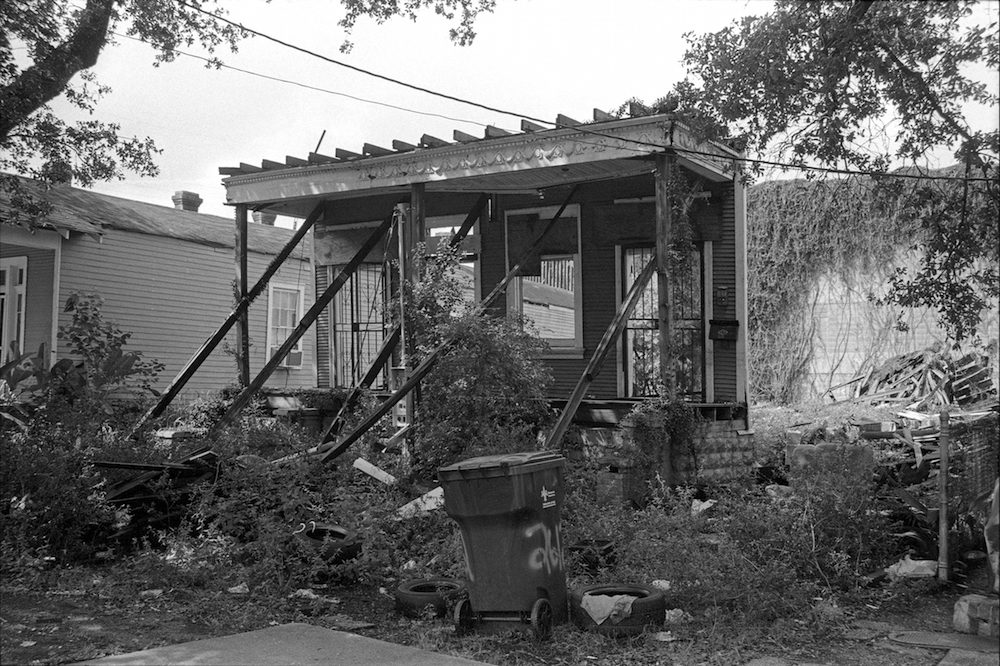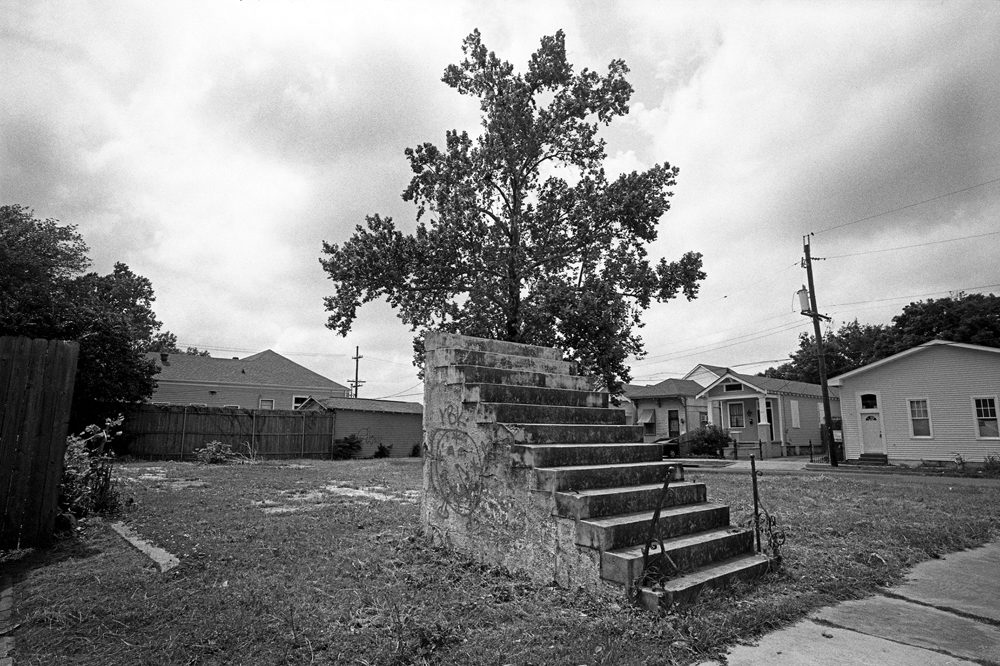Still Standing: David Spielman and “The Katrina Decade”
Taylor Murrow reflects on a recent book of photographs by David Spielman and the ten-year anniversary of Hurricane Katrina.

David G. Spielman, Mid-City, 2015, from the book The Katrina Decade: Images of an Altered City. Courtesy the artist and The Historic New Orleans Collection, New Orleans.
Now just hours away from the ten-year anniversary, and as expected, we’ve been inundated with Katrina coverage. I’m already worn out. I get tired of the images of blighted houses and debris-filled lots that have become so intrinsically connected to a post-Katrina view of New Orleans. But as soon as a tone deaf op-ed suggests that Katrina was a good thing for the city, my first reaction is to return to those pictures of destruction, to show the homes with boarded up windows, with x-codes still painted on them. To show the detritus, to show what we are still clearing and salvaging from the rubble.
David Spielman’s collection of photographs, The Katrina Decade: Images of an Altered City, recently published in book form by The Historic New Orleans Collection, is a complex glimpse into a city at a standstill. Over the last ten years, armed with his Leica camera, Spielman has photographed neighborhoods in New Orleans still very much in recovery.
In his essay for the publication, curator and historian John H. Lawrence notes that while there is ample “visual record of what the city looked like in the months and years following August 29, 2005,” Spielman approaches his photographs quietly as a recorder of buildings and their condition. By not limiting himself to a particular neighborhood or architectural style, Spielman allows himself the freedom to simply record a building’s condition and present it for the viewer to dissect. He captures homes and other structures that have been reclaimed by nature, many of which could have easily been taken before Katrina. These are some of my favorite photographs in the often painful collection—a reminder that we are part of the natural world down here and at its mercy for better or for worse. At the end of the day, the roads will buckle in the heat, and the streets will flood in a summer rain.
There are other moments of lovely juxtaposition. On one spread, the structure of a pumping station mirrors the shape of stained glass windows in a church: salvation. In another, spray paint on a brick wall cries out ART LIVES HERE and WITHOUT EDUCATION OUR CHILDREN FAIL. The urgent calls are met with a response on the opposite page: a tuba player from The Roots of Music, a local nonprofit that provides students with free music education, performing for a captivated child.

David G. Spielman, Uptown, 2013, from the book The Katrina Decade: Images of an Altered City. Courtesy the artist and The Historic New Orleans Collection, New Orleans.
Surely, there are those outside of the recovery zone who believe that New Orleans is “back to normal” by now, just as there are others who believe we’re still under water. (A friend told me recently that someone visiting her neighborhood asked where he could see the “Katrina destruction.” “I want to see flipped cars,” he said. She was left speechless.) Spielman’s images tell an important story, but they frequently leave out the real damage: the people who inhabit these neighborhoods, those who have lived here their whole lives and those who have arrived in the last ten years. Everyone has been affected by this catastrophe and we are still discovering what that means.
A photo of a concrete staircase leading to nowhere on an empty Uptown lot is shown opposite a deserted piano in the Ninth Ward. As neighborhoods shift and demographics change, who will be there to play the piano? There are still so many who have not been able to return home.
Photographs are a type of evidence, proof, a time stamp on a particular moment in history, but a photograph doesn’t tell a complete story. In another ten years, these buildings and neighborhoods documented by Spielman could be razed, renovated, or look exactly the same, and that is up to us and the choices we make as a city. Spielman’s images ask us to consider what those possibilities might be and what story we want to tell by the twentieth anniversary.



